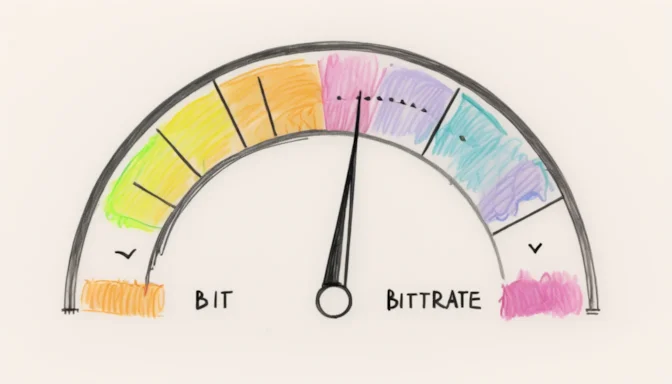What is Adaptive Bitrate Streaming?

Adaptive Bitrate Streaming (ABR) is a technology that adjusts video and audio quality in real-time, based on the viewer's bandwidth and CPU capabilities. This enables a more consistent and optimized streaming experience when compared to fixed bitrate streaming.
Adaptive Bitrate vs Multi Bitrate

In contrast to multi bitrate streaming, where viewers have to manually select the video quality, adaptive bitrate streaming takes over the task automatically. This accounts for the user's device and network conditions, ensuring a smoother streaming experience.
The Impact of Bitrate on Quality

Higher bitrates usually deliver superior audio and video quality. However, this advantage comes at the price of increased file sizes and a potential need for high-speed internet for uninterrupted streaming. Lower bitrates, on the other hand, might introduce compression artifacts and result in choppy videos.
Is Higher Bitrate Always Better?

While higher bitrate is often equated with better quality, it isn't the only factor to consider. Resolution and frame rate also play a pivotal role. For instance, high bitrate settings, when adaptive, can sometimes outperform 4K resolution depending on the source.
Bitrate and Streaming Performance

High bitrate streaming may provide exceptional quality but could result in buffering for users with slower internet speeds. Adaptive bitrate streaming is beneficial here, as it balances between quality and performance based on the viewer’s network.
Does Bitrate Affect Audio Quality?

Certainly, a higher bitrate corresponds to improved audio quality. However, it's essential to recognize that other variables like the quality of the original audio source can also influence the final output.
 E-Commerceo
E-Commerceo
